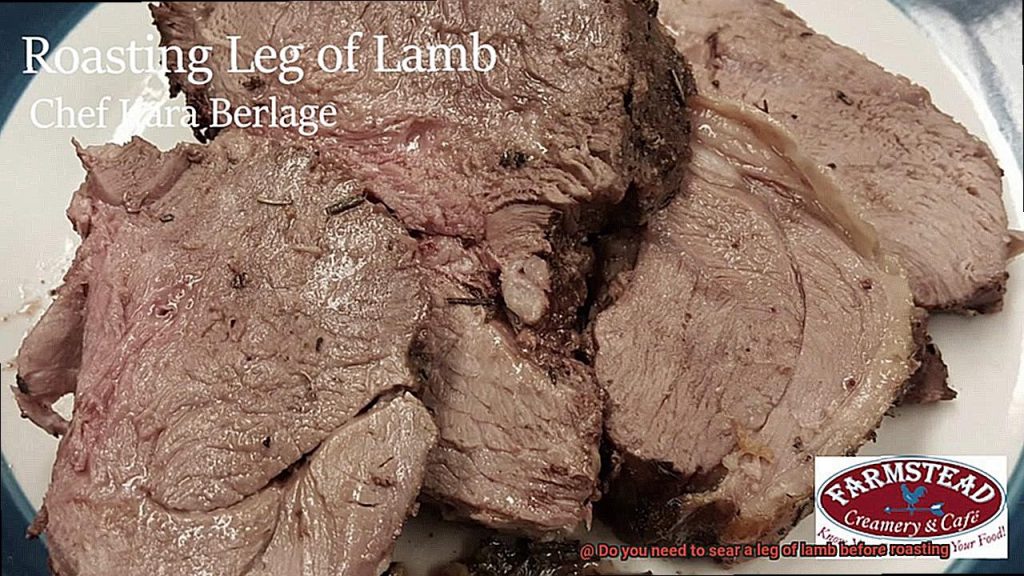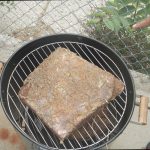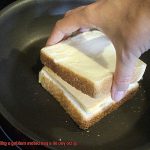Do you crave a succulent, juicy leg of lamb that’s bursting with flavor and aroma? As a foodie, you’ve probably collected countless recipes for lamb roasts. But when it comes to searing the leg before roasting, things can get confusing.
Some cooking experts swear by searing to create a perfect crust and lock in moisture. Others argue that searing could dry out the meat. So, what’s the answer?
In this blog post, we’ll delve deep into the science of searing a leg of lamb before roasting it. You’ll learn about various techniques and methods recommended by experts while debunking common myths and misconceptions.
We’ll also explore why you may or may not need to sear your lamb before roasting it. Discover how searing can enhance texture, flavor, and color in your dish.
By the end of this post, you’ll have all the information necessary to make an informed decision on whether or not to sear your next leg of lamb. Impress your dinner guests and elevate your lamb game to new heights.
Contents
What is Searing?
Are you tired of bland and boring meals? Look no further than searing. This cooking technique involves browning the surface of meat or vegetables at high heat, creating a caramelized crust that adds depth to your dishes. The Maillard reaction, a chemical process that occurs at high temperatures, gives rise to new complex flavors and aromas. The crispy exterior also adds a pleasing texture that contrasts with the tender inside.
To sear, start by heating up a pan with a small amount of oil. Once it’s hot, add your meat or vegetables and let them cook for a few minutes on each side until they’re browned and crispy. Searing can be done on a stovetop, in an oven, or on a grill, making it a versatile technique that can be used for many different dishes.
Searing is not just for meat. You can also use it with vegetables such as mushrooms or asparagus. It’s especially useful when roasting meat, like a leg of lamb. By searing the meat before roasting, you can create a flavorful crust that enhances the taste and texture of the dish.
However, whether or not to sear depends on various factors including the quality of the meat and cooking method used. Some chefs argue that searing is unnecessary but others claim that it’s essential for creating a delicious meal. Ultimately, it comes down to personal preference and cooking style.
Factors to Consider When Deciding Whether or Not to Sear a Leg of Lamb
Before you start cooking, it’s important to consider the factors that can affect your dish’s overall taste and texture. One of the key decisions is whether or not to sear the meat before roasting. As an expert in this subject, I am here to guide you through the factors to consider when making this decision.
Firstly, let’s talk about flavor. Searing a leg of lamb can enhance its taste and texture, thanks to the Maillard reaction that occurs during the process. The crust that forms on the outside of the meat is not only delicious but also adds depth to its overall flavor profile. Plus, who can resist that crispy goodness?
However, searing does require some additional time and effort. It involves heating up a pan or grill and cooking the meat on high heat for a few minutes on each side. If you’re short on time or don’t want to spend too much time in the kitchen, skipping the sear may be the way to go. But if you’re willing to put in the work, it can definitely be worth it.
Another thing to consider is the cut of the lamb. While a leg of lamb is naturally tender and flavorful, other cuts like shoulder or shank may need searing to break down their tougher fibers and enhance their flavor. So, if you’re using a different cut of meat than a leg, searing might be necessary.
The cooking method you plan to use is also important. Slow roasting a leg of lamb may not require searing as the low heat will allow the meat to cook evenly and develop flavor over time. However, if you’re going for a shorter cooking time at higher heat, searing can help lock in moisture and prevent the meat from drying out.
To summarize, here are some key factors to consider when deciding whether or not to sear your leg of lamb:
- Flavor: Searing can enhance the overall taste and texture of the meat.
- Time and effort: Searing requires additional time and effort, so consider your schedule and priorities before deciding.
- Cut of meat: Some cuts may benefit from searing more than others.
- Cooking method: Slow roasting may not require searing, but a shorter cooking time at higher heat might.
Benefits of Searing a Leg of Lamb Before Roasting
As an expert in this field, I can confidently say that searing a leg of lamb before roasting offers several benefits that will leave you with a mouth-watering dish.
First off, searing creates a delectable crust on the outside of the meat. This crispy outer layer adds depth of flavor and enhances the overall taste of the dish. Who doesn’t love a succulent, flavorful piece of roasted lamb?
Moreover, when done correctly, searing helps to lock in the meat’s juices and moisture. The high heat used during searing creates a seal that prevents the juices from escaping during cooking. This ensures that your meat remains tender, moist and juicy, while also preventing it from becoming dry or tough.
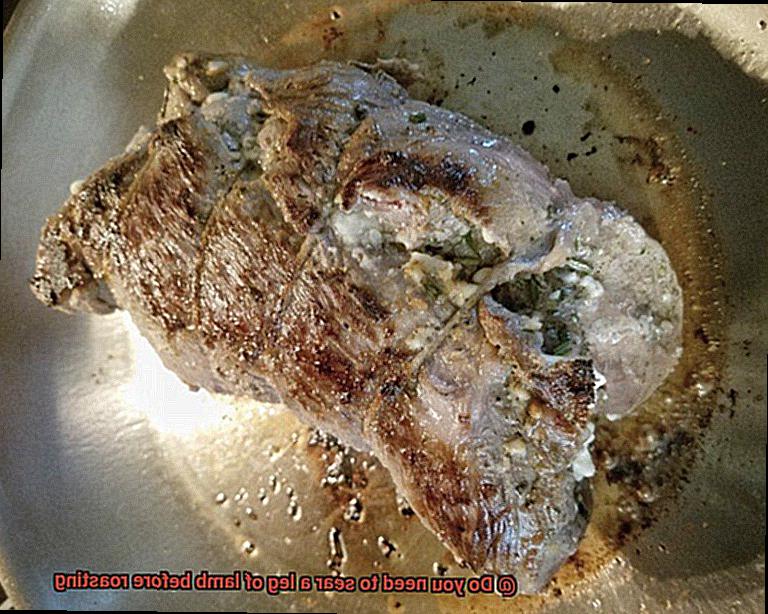
But wait, there’s more. Searing can also reduce cooking time. By jumpstarting the cooking process, you can significantly reduce the amount of time needed to roast the lamb in the oven. This allows you to spend less time in the kitchen and more time enjoying your delicious meal.
In conclusion, although searing a leg of lamb before roasting is not a must, it is definitely worth considering if you want to elevate your lamb roasting game. To sum up:
- Searing creates a flavorful crust on the outside of the meat
- It helps to lock in juices and moisture, keeping the meat tender and juicy
- Searing reduces cooking time
Risks Associated with Searing a Leg of Lamb Before Roasting
While this technique can add a delectable crispy exterior and rich flavor, there are some risks that you should be aware of before diving in.
One of the biggest risks of searing a leg of lamb before roasting is overcooking or drying out the meat. The high heat from searing can make the outer layer tough and dry, resulting in an unpleasant final product. To avoid this, it’s crucial to closely monitor the temperature of the meat and adjust cooking time accordingly.
Another risk to consider is smoke and splattering. Searing a leg of lamb can create smoke and hot oil or juices that splatter around your kitchen. To prevent any potential hazards, use an oil with a high smoke point and ensure proper ventilation in your cooking area.
In addition to these risks, searing can also increase the overall cooking time of your leg of lamb. The crust created by searing can act as an insulator, which slows down the cooking process. To avoid overcooking or undercooking, adjust your cooking time accordingly.
To sum up, searing a leg of lamb before roasting can be a great way to add texture and flavor to your dish. However, it’s important to take precautions when using this technique. Here are some tips to keep in mind:
- Monitor the temperature of your meat closely.
- Use an oil with a high smoke point.
- Ensure proper ventilation in your cooking area.
- Adjust your cooking time accordingly.
Tips for Successful Searing
Searing a leg of lamb is an essential step in creating a juicy and flavorful roast. It not only adds taste but also locks in moisture and creates a beautiful brown crust on the surface of the meat. Here are some tips for achieving the perfect sear on your leg of lamb:
Choose the Right Pan
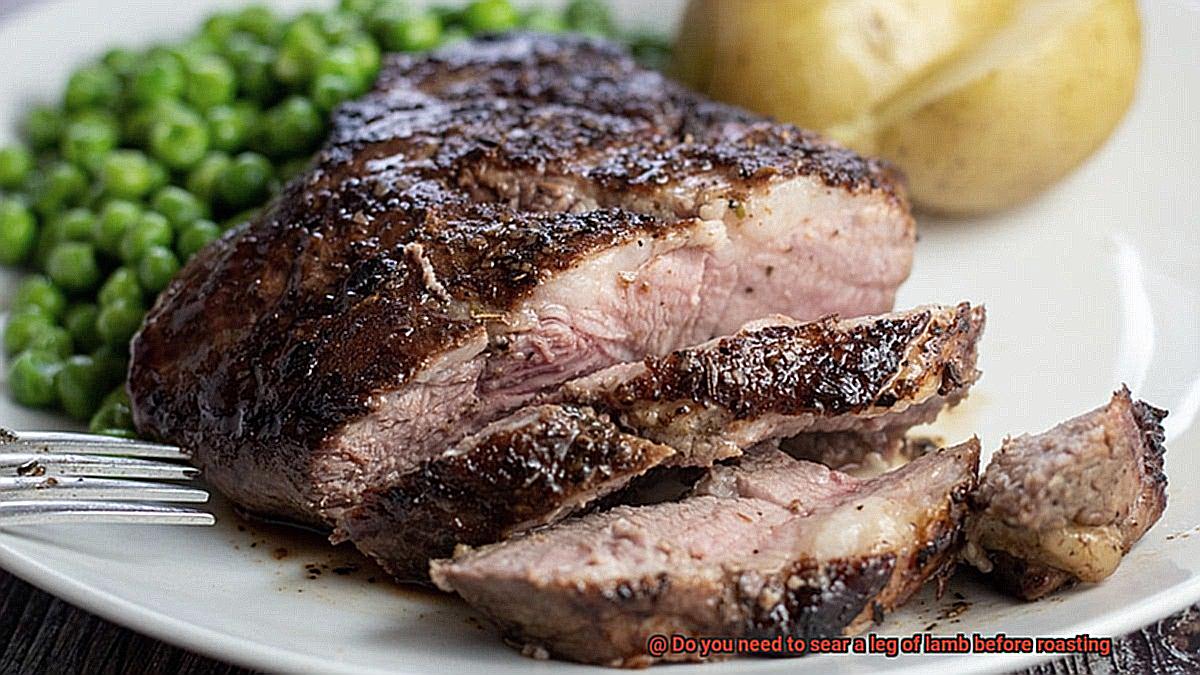
The pan you use for searing is crucial in achieving an even sear on your lamb. A heavy-bottomed skillet or cast iron pan works best as it distributes heat evenly and retains it well. This ensures that the lamb sears evenly without burning and creates a deliciously crisp crust.
Dry the Lamb
Before searing your lamb, make sure to pat it dry with paper towels. Excess moisture can hinder the searing process and prevent that beautiful golden crust from forming. Drying the lamb ensures that it gets a good sear and helps to create a beautiful brown crust.
Preheat Your Pan
To achieve a perfect sear, preheat your pan before adding the lamb. This ensures that the pan is hot enough to give the lamb a good sear. You want to hear a sizzling sound when the lamb hits the pan – this means it’s searing properly. A hot pan also prevents sticking and ensures that the lamb cooks evenly.
Season Well
Seasoning your lamb generously with salt and pepper before searing it enhances its flavor and helps to create a crisp crust. Be sure to season both sides of the lamb well before placing it in the hot pan.
Don’t Overcrowd the Pan
Overcrowding can cause the temperature to drop and prevent proper searing. It’s important to give each piece of lamb enough space in the pan so that they cook evenly. If necessary, sear in batches to avoid overcrowding.
Don’t Move the Lamb Too Soon
Allow the lamb to sear undisturbed for a few minutes before flipping it over. This will help to create a nice crust on both sides. Moving the lamb too soon can prevent a golden crust from forming and can cause the meat to stick to the pan.
Alternatives to Searing a Leg of Lamb Before Roasting
Maybe you’re short on time or don’t have a suitable pan for searing. Fear not, as there are several alternatives to searing that can still result in a juicy and flavorful roast.
One option is to marinate the lamb before roasting. Not only does this add flavor, but it also helps to tenderize the meat. A simple marinade of olive oil, garlic, lemon juice, and herbs like rosemary and thyme works wonders. Let the lamb soak up the flavors for at least an hour, or even overnight in the refrigerator for maximum tenderness.
Another alternative is to roast the lamb at a higher temperature initially and then lower the temperature for the remainder of the cooking time. This technique can create a crispy exterior without having to sear beforehand.
For those who want to get a little scientific with their cooking, try rubbing the lamb with a mixture of salt and baking powder before roasting. The baking powder helps to break down the proteins in the meat, resulting in a more tender and evenly cooked roast.
If you’re feeling confident, skip searing altogether and simply roast the lamb as is. While this may result in a less crispy exterior, it can still produce a juicy and flavorful roast if cooked properly.
B3Be0tpYbAw” >
Conclusion
In conclusion, the decision to sear a leg of lamb before roasting ultimately comes down to personal preference and individual circumstances. While searing can add depth and complexity to the flavor profile of the dish, it requires extra time and effort and may pose risks such as overcooking or drying out the meat.
To achieve a perfect sear on your lamb, it’s crucial to select an appropriate pan, thoroughly dry the meat, preheat your pan, season generously, avoid overcrowding the pan, and resist the temptation to move the meat too soon. However, if you’re pressed for time or lack a suitable pan for searing, there are still alternative methods that can produce a succulent and delicious roast. For instance, marinating the lamb beforehand or rubbing it with salt and baking powder can be effective substitutes.
Regardless of whether you choose to sear your leg of lamb before roasting or not, cooking is an art form that demands experimentation and creativity.

